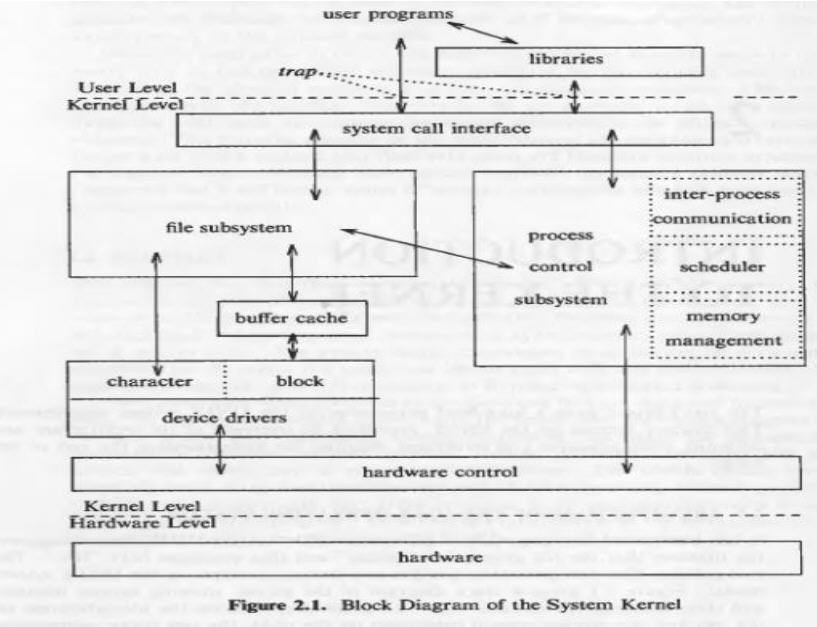Figure 2.1 gives a block diagram of the kernel, showing various modules and their relationships to each other. In particular, it shows the file subsystem on the left and the process control subsystem on the right, the two major component of the kernel.
The diagram serves as a useful logical view of the kernel, although in practice the kernel deviates from the model because some modules interact with the internal operations of others.
Figure 2.1 shows three levels: user, kernel, and hardware. The system call and library interface represent the border between user programs and the kernel depicted in Figure 1.1.
System calls look like ordinary function calls in C programs, and libraries map these function calls to the primitives needed to enter the operating system.
Assembly language programs may invoke system calls directly without a system call library, however. Programs frequently use other libraries such as the standard I/O library to provide a more sophisticated use of the system calls. The libraries are linked with the programs at compile time.
The figure partitions the set of system calls into those that interact with the file subsystem and those that interact with the process control subsystem. The file subsystem manages files, allocating file space, administering free space, controlling access to files, and retrieving data for users.
Processes interact with the file subsystem via a specific set of system calls, such as open (to open a file for reading or writing), close, read, write, stat (query the attributes of a file).
The file subsystem accesses file data using a buffering mechanism that regulates data flow between the kernel and secondary storage devices.
Device drivers are the kernel modules that control the operation of peripheral devices. Block I/O devices are random access storage devices alternatively, their device drivers make them appear to be random access storage devices to the rest of the system.
The process control subsystem is responsible for process synchronization, interprocess communication, memory management, and process scheduling.
The memory management module controls the allocation of memory.
The scheduler module allocates the CPU to processes. It schedules them to run in turn until they voluntarily relinquish the CPU while awaiting a resource or until the kernel preempts them when their recent run time exceeds a time quantum.
